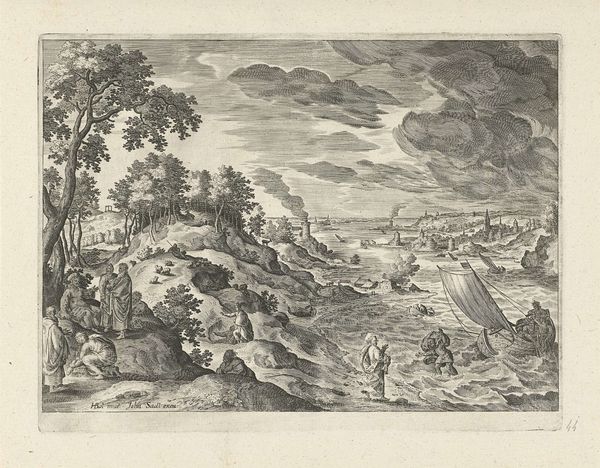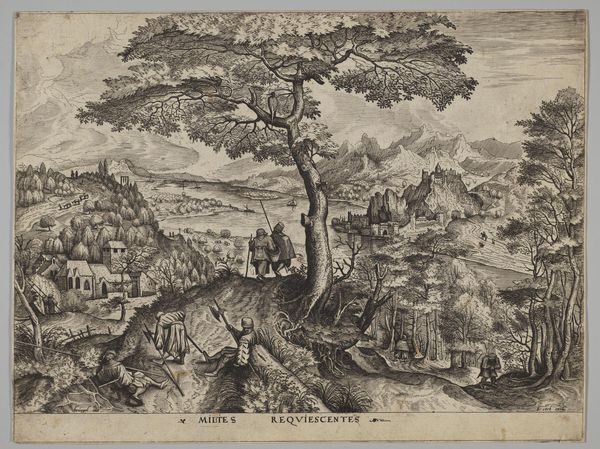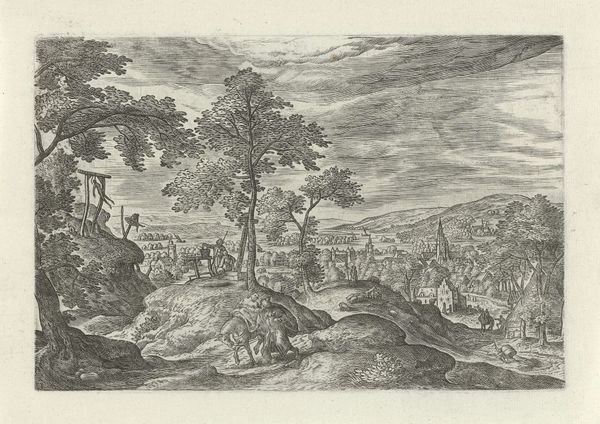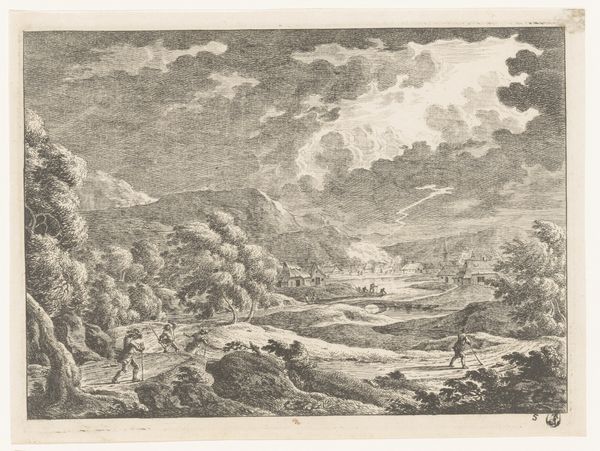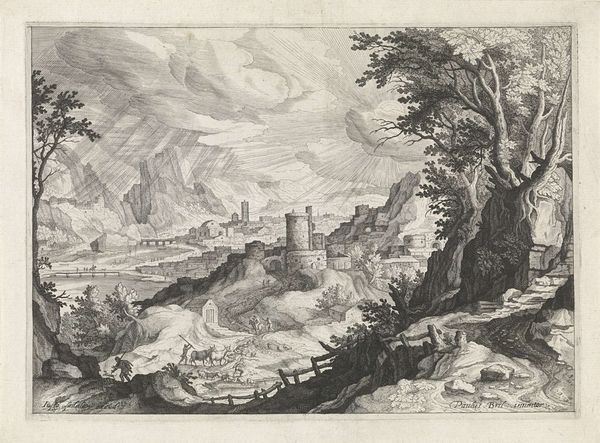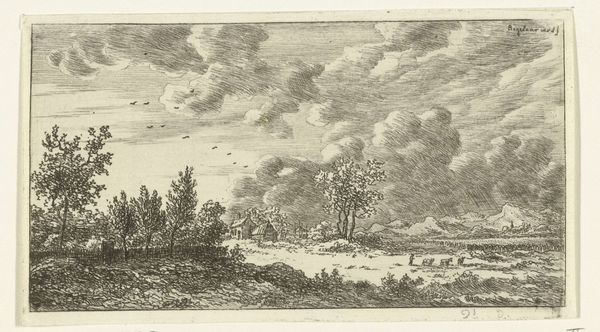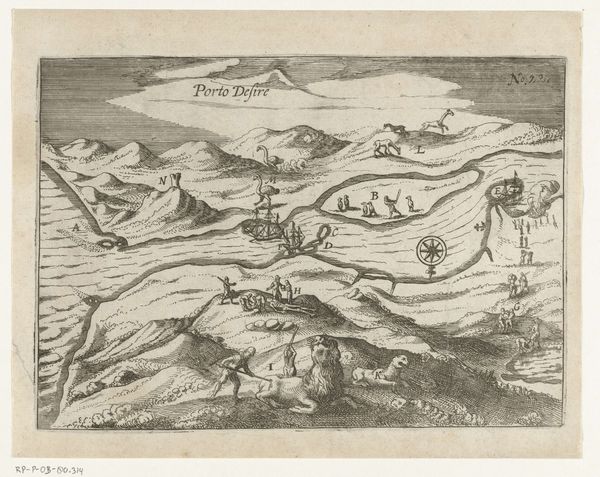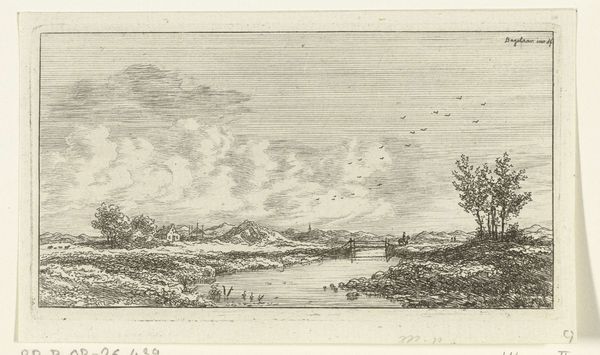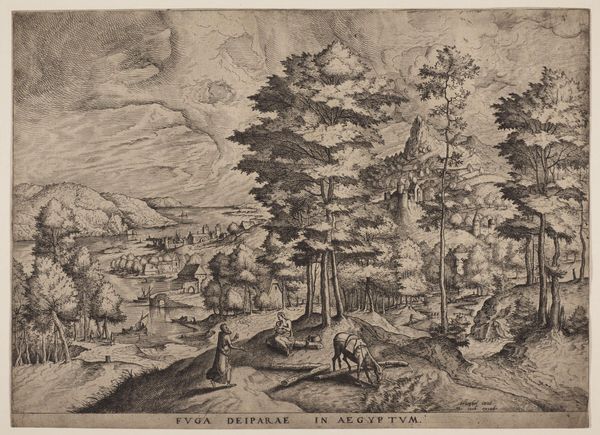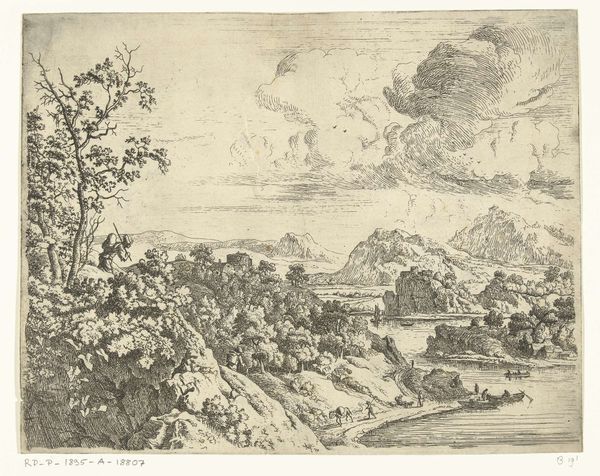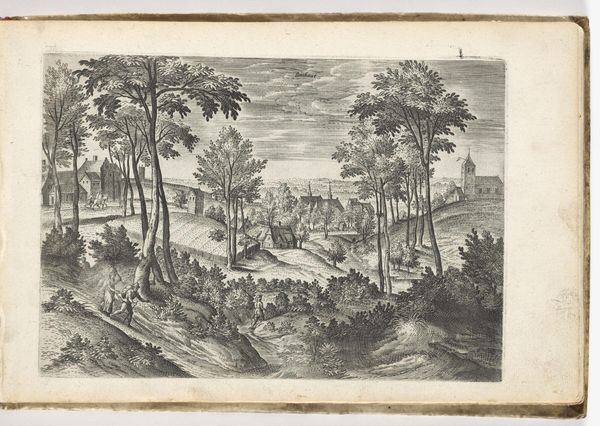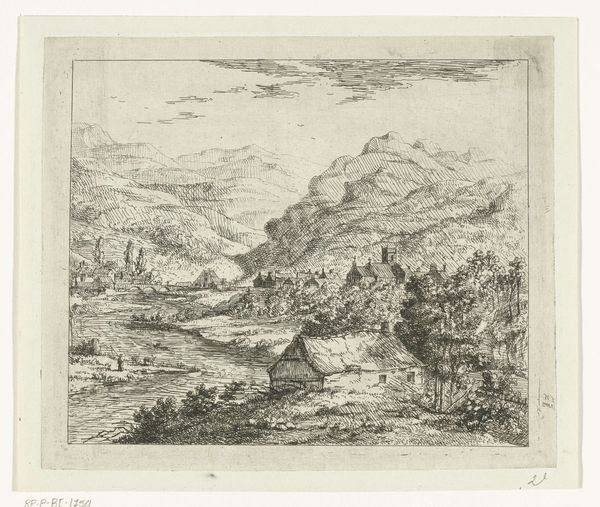
drawing, print, etching, ink, engraving
#
drawing
#
ink drawing
# print
#
pen sketch
#
etching
#
landscape
#
ink
#
genre-painting
#
northern-renaissance
#
engraving
Dimensions: height 324 mm, width 429 mm
Copyright: Rijks Museum: Open Domain
Editor: Here we have "Landschap met rustende maaiers," or "Landscape with Resting Mowers," created between 1553 and 1558 by Johannes or Lucas van Doetechum. It's an etching, engraving, and ink print, so the level of detail is really striking. The panoramic view is amazing, but the composition almost feels... unnatural? So, what do you see in this piece? Curator: It’s fruitful to observe that your initial response regards the composition, specifically. It's clear the artists were aiming for a sweeping vista, constructing a world with clearly defined foreground, middle ground and background. Notice how they employ techniques to achieve depth – the scaling of objects, the fading of detail into the distance. The landscape adheres to no readily discernible single viewpoint. What effect does that fracturing have on you as the viewer? Editor: It feels... constructed, like the landscape is a stage set. The jagged mountains and the flat plains are pushed together, almost. How does that affect our understanding of the print? Curator: Precisely. Consider the title, "Sollicitudo Rustica," rustic solitude. Do you find solitude here? Or does the very constructed nature of the piece undermine such a reading? Observe the figures resting on the right; are they truly 'in' the landscape, or posed before it? What semiotic purpose is the artist attempting to fulfill? Editor: I see what you mean. The human figures almost seem divorced from the landscape itself, not integrated. It's like they're there to be *seen* within it, and they add an artifical feeling, in a way. It changes the whole atmosphere. Curator: Indeed. By fracturing the landscape and posing figures in a certain way, the artists reveal more about artifice and composition, and invite a closer consideration of what the depicted landscape seeks to embody. Editor: It really forces you to examine the components, rather than accepting it at face value. I'll never see landscapes the same way again!
Comments
No comments
Be the first to comment and join the conversation on the ultimate creative platform.
